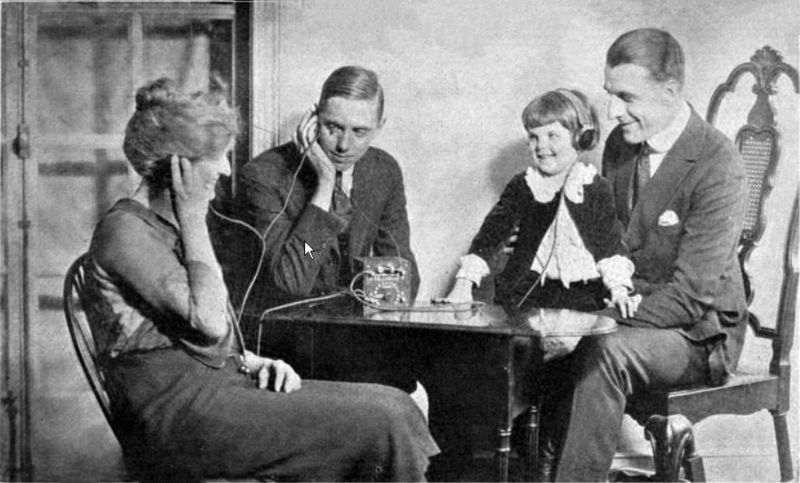Акс:Crystal radio advertisement.png

Андозаи ин пешнамоиш: 800 × 483 пиксел. Дигар кайфиятҳо: 320 × 193 пиксел | 640 × 386 пиксел | 881 × 532 пиксел.
Акси аслӣ ((881 × 532 пиксел, ҳаҷми парванда: 274 кбайт, навъи MIME: image/png))
Таърихи файл
Рӯи таърихҳо клик кунед то нусхаи марбути парвандаро бубинед.
| Таърих | Бандангуштӣ | Андоза | Корбар | Тавзеҳ | |
|---|---|---|---|---|---|
| нусхаи феълӣ | 17:22, 2 май 2021 |  | 881 × 532 (274 кбайт) | Materialscientist | FFT |
| 19:50, 12 Январ 2014 |  | 881 × 532 (173 кбайт) | Chetvorno | A clearer, less grainy, higher quality version of image | |
| 08:26, 25 ноябри 2010 |  | 823 × 494 (91 кбайт) | Chetvorno | {{Information |Description= {{en|Photo of a family in the 1920s listening to a Wikipedia:crystal radio. From a 1922 advertisement for Freed-Eisemann radios in ''Radio World'' magazine. Crystal sets are not powerful enough to power loudspeakers, so |
Пайвандҳо
Саҳифаҳои зерин ба ин акс пайванданд:
Истифодаи саросарии парванда
Викиҳои дигари зерин ин файлро истифода мекунанд:
- Истифода дар bat-smg.wikipedia.org
- Истифода дар en.wikipedia.org
- Истифода дар en.wikiquote.org
- Истифода дар es.wikipedia.org
- Истифода дар eu.wikipedia.org
- Истифода дар ga.wikipedia.org
- Истифода дар gl.wikipedia.org
- Истифода дар he.wikipedia.org
- Истифода дар hy.wikipedia.org
- Истифода дар ja.wikipedia.org
- Истифода дар lv.wikipedia.org
- Истифода дар ru.wikipedia.org
- Истифода дар rw.wikipedia.org
- Истифода дар ta.wikipedia.org
- Истифода дар vi.wikipedia.org
- Истифода дар zh.wikipedia.org



